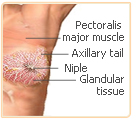Side Effects of Using Phytoestrogen Herbs
As more and more people turn to phytoestrogen as a treatment for hormone-related aliments it is important to be clear about the potential side effects. Although phytoestrogens are naturally produced by plants, they can affect the body in different ways, and only limited research has been carried out into whether or not they are safe to use. Read on to learn more about the side effects of phytoestrogen.
Phytoestrogenic Side Effects
The side effects of phytoestrogens differ depending on the plant from which the chemical is sourced. Soy, for instance, may have different phytoestrogenic side effects to black cohosh and so it's important to learn more about the source of phytoestrogens if considering including them in the diet. Below, some phytoestrogen side effects are explained in more detail.
 . Phytoestrogen acne: is one possible side effect and although not life threatening, it can be embarrassing and uncomfortable. . Phytoestrogen acne: is one possible side effect and although not life threatening, it can be embarrassing and uncomfortable.
. Soy intoxication: If a person starts to eat soy beans as a way of introducing phytoestrogens into their diet it important to be aware that the plant chemicals in these beans can be toxic and act as anti-nutrients. The beans must be cooked slowly or fermented to ensure that these harmful chemicals are not ingested.
. Lost of Zync absorption: Phytate, found in phytoestrogen, affects the body by binding to Zinc to estrogen receptors. This can cause Zinc absorption in the body to decrease, potentially damaging cell functions in the bones, skin, muscles, eyes, and kidneys.
. Phytochemicals found in soy: Some phytochemicals slow down the enzymes that digest protein into simple building blocks of amino acids, which does not occur in phytoestrogen-free products.
 . Other hormone medication: Such as the contraceptive pill or HRT, should not be taken alongside phytoestrogens. Side effects may include these treatments becoming ineffective. . Other hormone medication: Such as the contraceptive pill or HRT, should not be taken alongside phytoestrogens. Side effects may include these treatments becoming ineffective.
. Genistein inhibits an enzyme called GLUT-1: This enzyme transports glucose used in brain cells and red blood cells.
Studies into the amount of phytoestrogen in our foods suggest that large quantities of phytoestrogen affects male fertility by lowering levels of testosterone. Although more research needs to be carried out, it is clear that men should use phytoestrogen-free products, especially if they are trying to conceive.
Phytoestrogenic Herbs and Cancer
Regular intake of phytoestrogens increases the amount of estrogen in the body, and there is some evidence to suggest that increased levels of the plant hormones can cause or at least accelerate cancer cell growth.
In women breast cancer is a particular risk, as the breasts are a female attribute and growth is encouraged by levels of estrogen in the body.
Medical Research
A 2001 study showed that the amount of phytoestrogens usually consumed by American women had little effect on the risk of breast cancer. However, to date, research into the relationship between soy products and breast cancer has proved inconclusive.
 Obviously, this is a very serious and potentially deadly side effect of phytoestrogen and it is important to seek medical advice before introducing phytoestrogens into the diet. However, it is important to remember that it is still not clear exactly how phytoestrogens work and some research has suggested that these compounds can actually help stop the spread of phytoestrogen cancers. What is clear is that more research needs to be carried out into phytoestrogens. Obviously, this is a very serious and potentially deadly side effect of phytoestrogen and it is important to seek medical advice before introducing phytoestrogens into the diet. However, it is important to remember that it is still not clear exactly how phytoestrogens work and some research has suggested that these compounds can actually help stop the spread of phytoestrogen cancers. What is clear is that more research needs to be carried out into phytoestrogens.
Now that the side effects of phytoestrogenic herbs have been described. Click on the following link to keep reading about phytoestrogenic herbs and menopause.
Conclusions
Although phytoestrogens do have their positives and many people find them to be largely effective in treating hormone and estrogen related-health problems, phytoestrogen supplements can also produce side effects, the most serious being breast cancer. To learn more about alternatives, such as non-estrogenic products, read the article below.
Which herb should women try? Today women are looking for relief from their menopause symptoms with herbs. Phytoestrogenic herbs and non-estrogenic herbs are good in relieving menopause symptoms, but recent studies show that non-estrogenic herbs have no side effects because they help the body to produce its own hormones instead of introducing hormones like the phytoestrogenic ones. Learn more about non-estrogenic herbs for menopause.
| 

